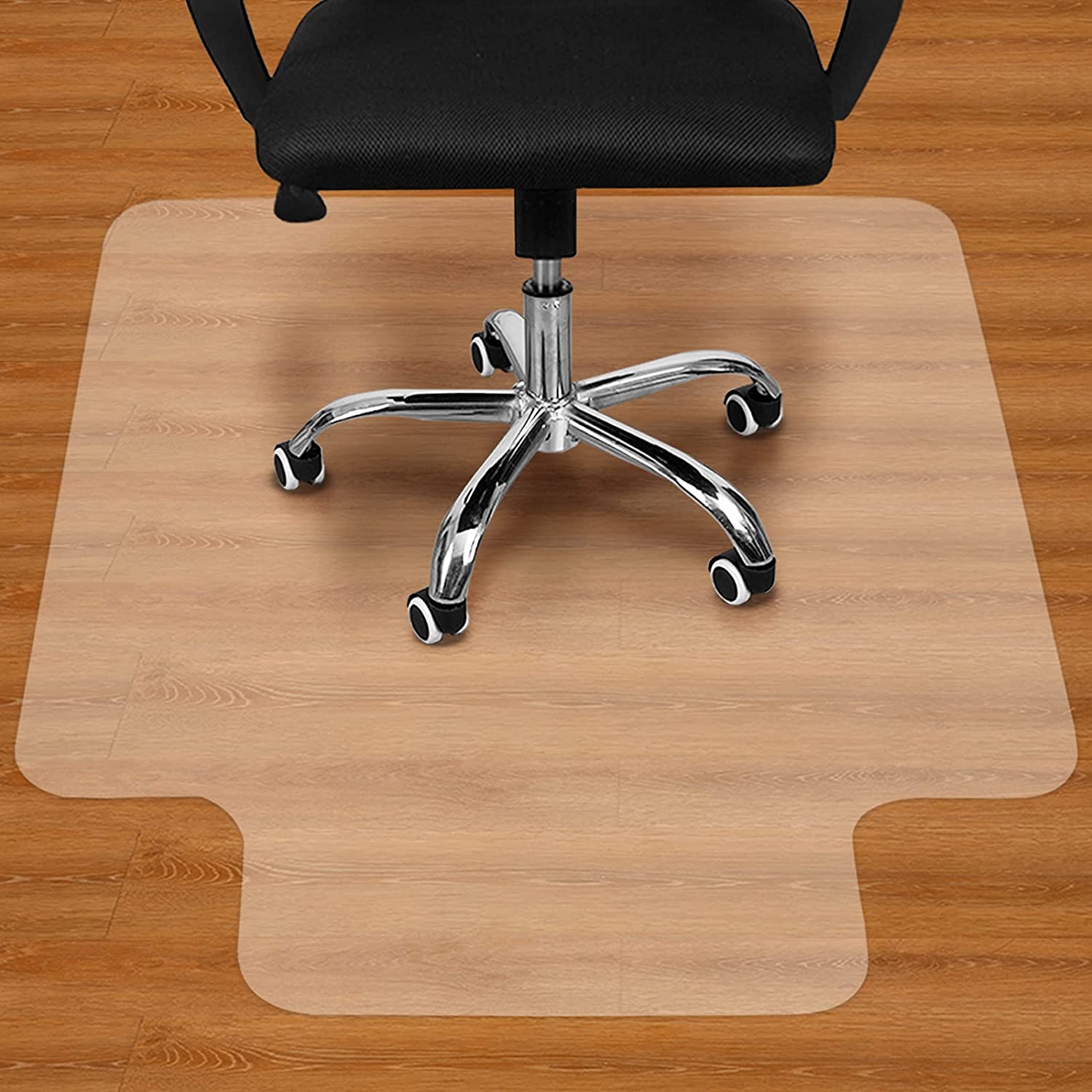Understanding the Risks

Protecting your wood floors from damage caused by office chairs is crucial for maintaining their beauty and longevity. Understanding the common ways chairs can damage your floors is the first step towards taking preventive measures.
Types of Chair Damage
Different types of office chairs can cause distinct damage to wood floors. The primary causes include:
- Scratches: Chairs with sharp edges or rough surfaces can easily scratch wood floors, especially those with delicate finishes. This is more common with chairs with metal legs or arms.
- Dents: The weight of a chair, particularly heavy chairs with casters, can cause dents in wood floors over time, especially on softer wood species. This can be exacerbated by the force applied when moving the chair.
- Wear and Tear: The constant movement of a chair can cause wear and tear on the floor’s finish, leading to dullness and discoloration. This is particularly true for high-traffic areas.
Impact of Different Chair Types
The type of office chair you use can significantly impact the risk of damage to your wood floors:
- Rolling Chairs: Chairs with casters, especially those with hard plastic or metal casters, can easily scratch or dent wood floors. The rolling motion can also contribute to wear and tear on the finish.
- Swivel Chairs: While swivel chairs are less likely to cause scratches, their constant turning can still contribute to wear and tear on the floor’s finish.
Role of Chair Mats
Chair mats play a crucial role in protecting wood floors from damage caused by office chairs. These mats provide a protective barrier between the chair and the floor, reducing the risk of scratches, dents, and wear and tear.
- Protection from Scratches and Dents: Chair mats with smooth surfaces prevent the sharp edges and casters of chairs from scratching or denting the floor.
- Reduced Wear and Tear: The smooth surface of a chair mat reduces friction, minimizing wear and tear on the floor’s finish.
- Increased Stability: Chair mats can provide a more stable surface for rolling chairs, reducing the likelihood of accidents and further damage to the floor.
Protective Measures: Protect Wood Floor From Office Chair

Protecting your wood floors from the wear and tear of office chairs is essential for maintaining their beauty and longevity. This section explores various protective measures you can implement to safeguard your investment.
Protective Materials, Protect wood floor from office chair
Protective materials act as a barrier between your office chair and your wood floor, preventing scratches, dents, and other damage. Here are some popular options:
- Rugs: Area rugs placed strategically under your desk and chair can effectively protect the floor. Choose rugs with a durable backing and a thick pile to absorb impact and prevent slippage. Consider rugs made from natural fibers like wool or cotton, which are known for their resilience.
- Mats: Chair mats are specifically designed to protect floors from the rolling wheels of office chairs. They come in various materials, sizes, and styles, catering to different floor types and chair types.
- Floor Protectors: These are small, adhesive pads that stick to the bottom of chair legs. They are particularly effective for preventing scratches on hardwood floors. Floor protectors are available in various materials, including felt, rubber, and plastic.
Choosing the Right Chair Mat
Selecting the right chair mat is crucial for effective floor protection. Consider the following factors:
- Floor Type: Choose a chair mat designed for your specific floor type. For example, mats made from hard plastic are suitable for hardwood floors, while mats with a soft, textured surface are better suited for carpet.
- Chair Type: The type of chair you use will also influence your choice. If you have a heavy chair with rolling wheels, you will need a sturdy and durable mat. For lighter chairs, a thinner and more flexible mat may suffice.
- Size: The size of the mat should be large enough to accommodate the movement of your chair without causing it to slide off the mat. Ideally, the mat should extend at least 12 inches beyond the chair in all directions.
Applying Protective Coatings
Protective coatings can create a durable barrier on your wood floors, enhancing their resistance to scratches, stains, and water damage.
- Polyurethane: Polyurethane is a popular choice for wood floor coatings. It is durable, water-resistant, and available in various finishes, from matte to gloss. Apply multiple thin coats for optimal protection.
- Wax: Wax provides a protective layer that helps repel dirt and water. It is a good option for floors that receive moderate foot traffic. Apply wax regularly to maintain its effectiveness.
- Oil-based finishes: Oil-based finishes penetrate the wood, providing a durable and protective layer. They are known for their natural look and feel.
Protect wood floor from office chair – Protecting your wood floor from an office chair can be a constant battle, especially with the wear and tear of rolling wheels. While a white dressing table and chair, often chosen for their elegant aesthetic , might not see the same heavy use, the principles of floor protection remain the same.
Investing in a good chair mat or ensuring your office chair has smooth-rolling wheels can make a world of difference in preserving the beauty of your hardwood floors.
Protecting your wood floor from the wear and tear of an office chair is a common concern, but it’s also a consideration for those who enjoy the elegance of a makeup vanity chair white in their bedroom. Whether it’s a rolling office chair or a delicate vanity chair, the key is to choose floor protectors that blend seamlessly with your décor while offering adequate cushioning and stability.
